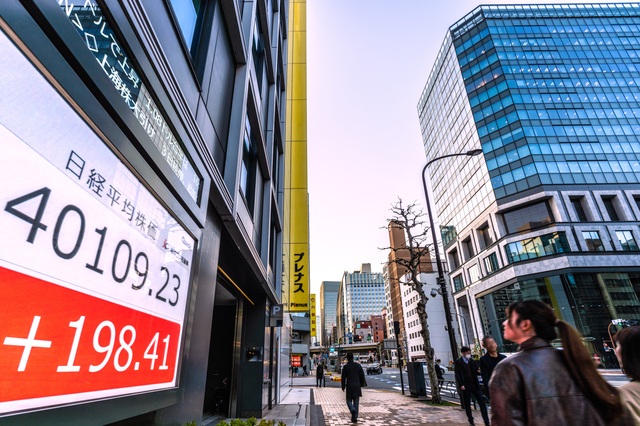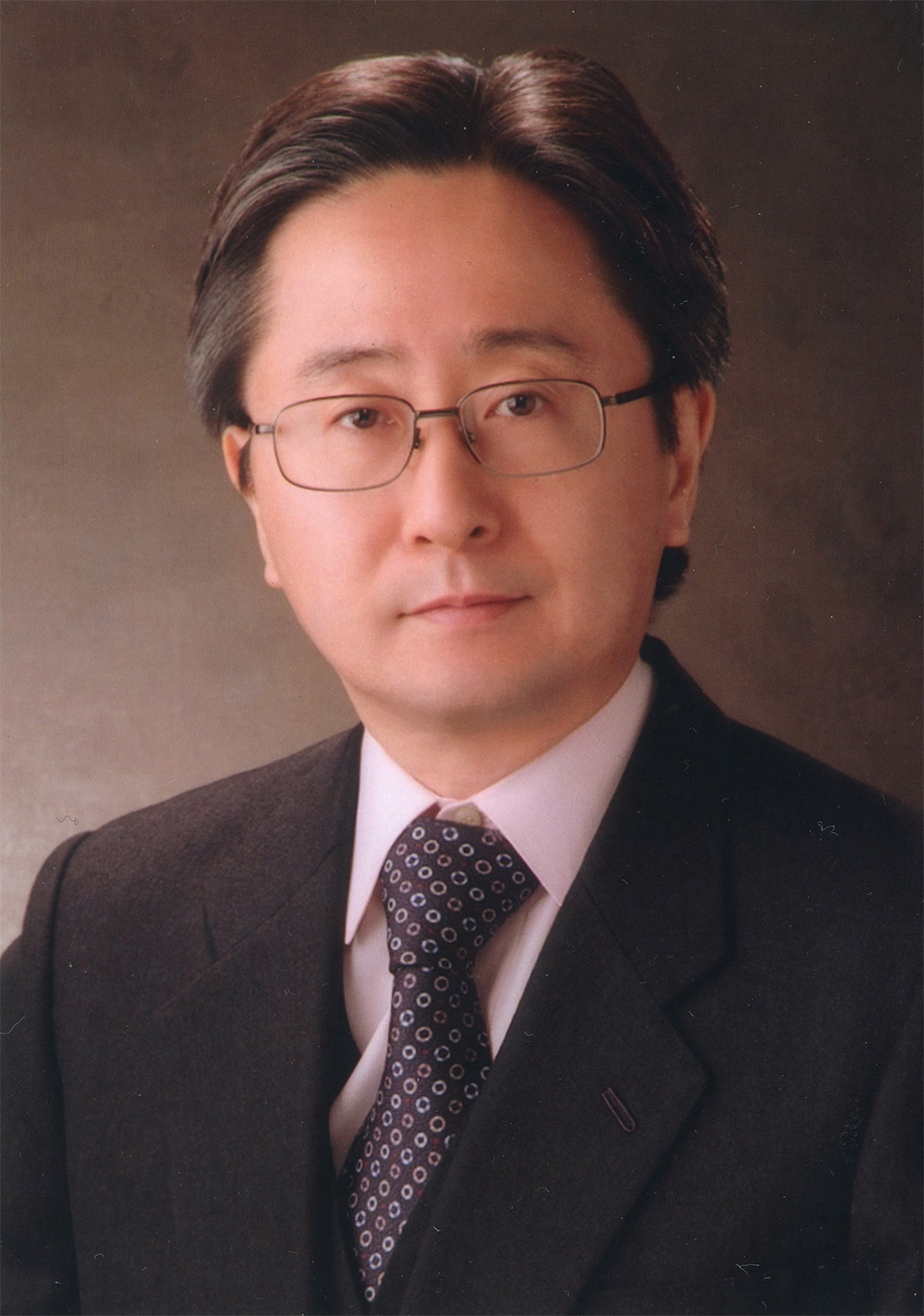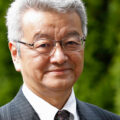Misunderstanding and Blind Spot of Belief in Higher Interest Rates and Stronger Yen

The Nikkei Stock Average closed at 40,109.23 yen on March 4, 2024, the first time it reached the 40,000 yen level, and then on August 5, 2024, it fell 4,451 yen from the previous trading day’s closing price, the largest drop in history. The decline of 7,643 yen (closing price basis) in the three business days from August 1 was an unprecedented crash.
Photo: Ryuji / PIXTA
Although stock prices and exchange rates remain unstable, can policy management aimed at a “desirable exchange rate” or “normal interest rate level” really be considered rational? The priority should be to achieve an improvement in the economy and economic growth.
On August 5, 2024, the Nikkei Stock Average recorded its largest decline in history, falling 4,451 yen from the previous day’s close. The decline of 7,643 yen (closing price basis) in the three business days from August 1 was an unprecedented crash.
The Nikkei Stock Average, which peaked at 42,427 yen on July 11, is still unstable, but by August 16 it had recovered somewhat to 38,062 yen. The sharp fluctuations in August may not necessarily be a turning point for stock prices and exchange rates in the medium to long term. On the other hand, it provides important discussion points for future monetary policy and market expectations for Japan’s economic policy.
The immediate trigger for the August crash was the deterioration in the US Current Employment Statistics report released on August 2. The worsening economic outlook led to widespread expectations that the pace of the policy interest rate cuts in the United States would accelerate. As a result, stock prices in the US, Europe and Asia remained weak. However, the decline in stock prices in the US and European markets was limited to about 3–5%, and no other country experienced the crash and subsequent turmoil that Japan did. Furthermore, in terms of exchange rates, the Japanese yen is high not only against the US dollar but also against almost all major currencies, which can be interpreted as a unique factor affecting stock prices and exchange rates in Japan.
The failure that should have been predictable
The Bank of Japan (BoJ) decided on July 31 to raise the target level of the uncollateralized overnight call rate, the policy interest rate, from 0.1% to around 0.25%. In addition, specific proposals were made to reduce purchases of long-term government bonds. However, what had a greater impact on the market than these actual decisions was the press conference held by BoJ Governor Ueda Kazuo after the Monetary Policy Meeting. Many market participants interpreted the statement that “it would be appropriate that the Bank accordingly continue to raise the policy interest rate and adjust the degree of monetary accommodation” as an indication of a strong determination to raise interest rates further.
It is true that the rate hike and the announcement of the intention to raise rates further were ultimately hasty decisions. Economist and former US Treasury Secretary Lawrence Summers pointed out (on Bloomberg TV) that the policy shift “after such a long time of such low interest rates could perhaps have been executed more gently” and also criticized the BoJ’s response after the stock market crash.
On the other hand, some people believe that it was bad luck and timing, not the decision to raise interest rates, because the sudden market changes after the rate hike cannot be predicted in advance. The high stock prices until mid-July were a kind of bubble that could not be sustained and would collapse sooner or later—therefore, some people argue that it is wrong to question the BoJ’s rate hike. In fact, it is important to consider whether the BoJ was able to foresee the risks and problems that the rate hike would bring.
In general, monetary policy is managed with an eye on both prices and the real economy (economic conditions and growth). Based on textbook monetary policy theory, the recent policy decision must be called an unnecessary and non-urgent measure.
In the June consumer price index (CPI) released on July 19, the core index (all items excluding fresh food)[1] rose 2.6% year-on-year, and the core-core CPI (excluding fresh food and energy) rose 2.2%. These figures are close to the BoJ’s 2% inflation target. The spillover from import prices to domestic prices seen in 2023 has subsided. Moreover, measures of underlying inflation (so-called core inflation measures)[2], which exclude some goods and services that have experienced extreme price changes, are increasingly falling below 2% year on year. Even in the price outlook of the BoJ’s Policy Board members, the consensus forecast for the core-core CPI from 2024 to 2025 remains around 2%. The BoJ authorities themselves recognize that they are not in a situation where they need to raise interest rates to respond to rising inflation.
In the real economy, however, economic growth in the April–June quarter was +0.8% compared to the previous quarter, the first positive growth in two quarters, but just barely recovering from the intermittent negative growth recorded since last year. The GDP gap estimated by the Cabinet Office was also minus 1.4% (January–March quarter), indicating a situation in which demand is insufficient compared to supply capacity.
Even the Ministry of Finance (MOF), which is considered to be relatively proactive in raising interest rates, has said that it needs to pay attention to weak domestic demand. At the Monetary Policy Meeting held on June 13 and 14, a representative of the MOF stated that “private consumption lacks strength, and the MOF is also aware of the risks to the overseas economy,” adding that “we expect appropriate monetary policy management to ensure the sustainable and stable realization of the price stability target of 2 percent.”
Here, we should also pay attention to the “risks to the overseas economy” pointed out by the MOF. Inflation rates are also coming to an end in the US economy. The year-on-year CPI growth rate, which temporarily exceeded 9%, has fallen to around 3%. Many economists had predicted interest rate cuts this year even before the release of the Current Employment Statistics on August 2, and it was necessary to be fully alert to the possibility that the number and size of interest rate cuts would increase.
The BoJ was fully aware of the risks associated with the current interest rate hike. Moreover, it was not in a situation where it needed to push through the rate hike at the cost of taking on those risks—namely, there was no acceleration of inflation or overheating of the economy. The current market instability has arisen from unnecessary interest rate hikes and the materialization of foreseeable risks.
Exchange rates do not represent a country’s strength
What prompted the BoJ to make such a hasty decision? The reduction in quantitative and qualitative monetary easing (QQE) and the increase in interest rates are policies that Governor Ueda has been pursuing since he took office. Hypothetically, if price and economic developments had continued until last year, the decision to raise interest rates by such a small amount would have been somewhat justified. But those conditions have now disappeared. Monetary policy is distinguished from other policies by its ability to respond flexibly to situations. Implementing a policy that has been prepared for a long time regardless of the situation is tantamount to giving up the advantages of monetary policy.
On the other hand, we must not forget that some politicians and the media urged the BoJ to raise interest rates. In an interview on July 17, Kono Taro, then Minister of Digital Transformation, urged the BoJ to raise the policy rate in order to strengthen the yen (he later explained that this was his personal opinion). On the 19th of the same month, then Prime Minister Kishida Fumio said at the Keidanren Summer Forum that he would “lead further neutralization of monetary policy,” and Motegi Toshimitsu, then Secretary-General of the Liberal Democratic Party, said in a speech in Tokyo on the 22nd of the same month that “it is necessary to more clearly state a policy of normalizing monetary policy, including the consideration of a gradual increase in interest rates.” Indeed, it could not be denied that the BoJ may have found it politically difficult to make the decision to postpone the rate hike.
What on earth is driving the administration and ruling party leaders to make such a strong case for raising interest rates? If the policy interest rate is raised, interest will also be paid on the excess reserves that each bank holds at the BoJ, so some criticize this as an attempt to induce profits in the financial industry. Also, since QQE and low interest rates during the time of Bank of Japan Governor Kuroda Haruhiko were the symbolic achievements of the late Prime Minister Abe Shinzo, some have pointed out that the new leaders of the ruling party after the Abe administration are trying to show policy guidelines that are different from Abenomics. As an aside, it seems to me that a large part of the calls for rate hikes and a stronger yen among left-leaning and liberal commentators are not based on any particular economic ideology, but rather on “anti-Abe” sentiment. Liberals who prioritize bank management and exchange rates over employment and welcome rising interest rates, which are unearned income, are rare internationally.
But more than these pragmatic reasons, isn’t it the “belief” regarding monetary policy and the foreign exchange market that should be emphasized? First of all, let’s consider the “excessive yen depreciation” theory that many politicians have been talking about.
When considering the relationship between monetary policy and the exchange rate, one must bear in mind the trilemma of international finance. This refers to the logical conclusion that it is impossible to achieve all three of the following at the same time: free movement of capital (absence of capital controls), a fixed foreign exchange rate and an independent monetary policy. For example, if one tries to fix the exchange rate in an environment where international capital transactions are free, monetary policy must be manipulated to maintain the exchange rate regardless of the state of the domestic economy. On the other hand, if monetary policy is changed in response to domestic economic conditions, the exchange rate will be determined by the market. In order to achieve both exchange rate control and the implementation of monetary policy in line with the domestic economy, it is necessary to regulate international financial transactions. However, this is not a realistic option for developed countries with liberal economic spheres.
If monetary policy is implemented in accordance with domestic economic conditions, such as economic growth rate and price fluctuations, the exchange rate cannot be controlled. It will only be determined by the market. On the other hand, assuming a desirable exchange rate and implementing monetary policy to achieve it is nothing but a policy approach that puts the exchange rate ahead of the domestic economy. It may be one thing for a debtor nation facing the challenge of repaying its huge dollar debt, but there is no reason for the world’s largest creditor nation (a nation with net foreign assets) to prioritize the exchange rate over the domestic economy. A weak yen is an inflationary factor. Therefore, if the domestic inflation rate rises significantly, it may be possible to choose a higher exchange rate for the sake of the domestic economy. However, as mentioned above, domestic inflation is slowing down.
Also, the criticism that a weak yen harms national wealth because it is tantamount to selling Japanese products at a low price is a misunderstanding. It is rare for a company to raise or lower overseas sales prices (prices in dollars) based on the exchange rate. The sales price of Japanese cars in the United States is determined based on sales conditions in the United States and the prices of other companies. When the yen-denominated prices of imported goods rise due to a weak yen, the yen-denominated prices of exported goods also rise (because the dollar-denominated prices remain constant). The price relationship between exports and imports is called the terms of trade, and in Japan’s case, most short-term changes in the terms of trade are determined by the international price of energy, which is a major imported commodity. This cannot be changed by Japan’s economic policies.
There is also no basis for the argument that the exchange rate is an indicator of national power or prestige. No one would think that national power or prestige increased from the late 2000s to 2012, when the yen continued to appreciate significantly. When the domestic economic situation improves sufficiently and interest rates are raised to prevent inflation and overheating of the economy, the exchange rate also changes in the direction of yen appreciation. The appreciation of the yen due to such a boom can indeed be said to be an increase in national power.
On the other hand, even if we aim for a stronger yen without taking into account the state of the domestic economy, neither the Japanese economy nor Japan’s so-called national power will increase. On the other hand, neither the Japanese economy nor Japan’s national strength will increase if the yen appreciates without taking into account the domestic economic situation. For developed countries that have a floating exchange rate system, the exchange rate is the result of domestic policies, not a target.
Natural faith in monetary policy
Even leaving aside the exchange rate issue, there is a strong argument that interest rates should be raised quickly. The key word emphasized by these rate hike advocates is “normalization of monetary policy.” The phrase “a world with (normal) interest rates” is also often used.
But is there such a thing as an independent, normal and natural interest rate level in the economic situation? The currencies of the major modern countries are not backed by precious metals, like the gold standard, nor are they guaranteed to be exchangeable with foreign currencies under a fixed exchange rate system. In other words, they are, so to speak, completely “artificial.”
In the world of economic theory, the “natural rate of interest” refers to the interest rate level that matches total domestic demand with supply and production capacity. Here, we will explain based on the real interest rate, which is the nominal interest rate minus the expected inflation rate. The two demands that are most susceptible to the effect of the real interest rate are investment and consumption. When the real interest rate rises, spending through borrowing becomes less favorable and saving and prepaying loans becomes more favorable.
When the real interest rate is higher than the natural rate of interest, demand is low due to a lack of consumption and investment, and economic activity remains at a level that does not fully utilize production and supply capacity. On the other hand, if the opposite is true, production cannot keep up with demand and inflation accelerates. Generally, monetary policy is conducted so that the real interest rate is consistent with the natural interest rate.
What level might the natural interest rate be at in modern Japan? A company’s willingness to invest is not determined by the interest rate alone. It fluctuates depending on both domestic and international economic conditions as well as forecasts for the future, which means that the natural rate of interest is not fixed at a constant value. However, in a situation where the current yield on long-term government bonds is 1% and the expected inflation rate is around 2%—in other words, since the GDP gap is still slightly negative even when the long-term real interest rate is negative 1%—it is certain that the natural interest rate in Japan is negative.
If the natural rate of interest is negative, then the real interest rate that monetary policy should target will also be negative. Given the current state of the Japanese economy, the natural rate of interest is likely to remain negative for some time to come. One reason for this is the age structure of the population. In Japan, there are more people in their 50s than younger people who are motivated to save, for example, to repay mortgages and accumulate assets for life after retirement. In addition, the expansion of employment among older workers has made it less likely that people will withdraw their savings.
A negative real interest rate is neither unnatural nor abnormal. Many countries have experienced periods of negative real interest rates in the past. And if zero or low interest rates are necessary to keep the real interest rate negative, that is a normal monetary policy operation that is neither unnatural nor abnormal.
What is the goal of economic policy?
Policy management that aims at a “desirable exchange rate[3]” or a “normal interest rate level[4]” does not seem rational. The goal of economic policy is to achieve stability and improve people’s lives through economic growth. Individual policies should be chosen from the perspective of the ultimate goal of improving people’s economic welfare.
As Governor Ueda mentioned at the press conference, there are signs that “the movement for wage increases is spreading not only to large firms but also to a wide range of regions, industries, and firm sizes. Therefore, monetary policy should be conducted in such a way as to make the most of the broad-based economic improvement that has finally begun to emerge. The combination of improved corporate performance and labor shortages could lead to further wage increases. Higher wages translate into higher consumer demand. And the corporate sector will be forced to invest in labor-saving measures and change the way companies are run as a countermeasure to rising wages.
These increases in demand will increase the natural interest rate, which is the interest rate that matches supply and demand. When the natural interest rate rises, the appropriate level of the policy interest rate corresponding to the domestic economy will also rise. It is only when an interest rate increase becomes necessary due to economic recovery that an interest rate increase becomes a “normal and natural” monetary policy stance.
The raising of interest rates does not improve economic conditions. However, if improvements in economic conditions and economic growth are achieved, it will naturally lead to a situation where interest rates should be raised or interest rates have to be raised. If high interest rates are considered the ultimate goal, wouldn’t prioritizing economic conditions and growth over raising rates be the faster route?
Translated from “Tokushu Enyasu no Shotai: Riage, Endaka Shinko no Gokai to Moten (Special Feature: The True Nature of the Weak Yen: Misunderstanding and Blind Spot of Belief in Higher Interest Rates and Stronger Yen),” Voice, October 2024, pp. 48–55. (Courtesy of PHP Institute) [October 2024]
[1] The core index (all items excluding fresh food) is the figure obtained by excluding fresh food from the “comprehensive index” of the consumer price index (CPI) published monthly by the Ministry of Internal Affairs and Communications.
[2] The Bank of Japan’s Statistics Bureau explains “Measures of Underlying Inflation” as follows: Measures of underlying inflation (the so-called core inflation measures) — obtained by removing transitory disturbances from the actual movements observed in the consumer prices — are frequently used for inflation analysis. Instead of focusing on a specific core inflation measure, a comprehensive examination of various core inflation measures enables us to identify the trends of price movements in a more accurate manner.
https://www.boj.or.jp/en/research/research_data/cpi/index.htm
[3] A desirable exchange rate is usually considered to be the mid-market rate, which is the midpoint between the buy and sell prices of two currencies. A good rate is anything that’s at or above the mid-market rate.
[4] A normal interest rate level is often indicated by long-term interest rates. A neutral interest rate is the rate of interest that’s consistent with stable inflation and no over- or under-utilized resources.
Keywords
- Iida Yasuyuki
- Meiji University
- interest rate
- interest rate cut
- interest rate hike
- exchange rates
- weak yen
- yen-dollar
- Nikkei Stock Average
- stock prices
- crash
- Bank of Japan
- Ueda Kazuo
- consumer price index
- inflation
- Ministry of Finance
- price stability
- monetary policy
- economic policy
- “excessive yen depreciation” theory
- QQE
- terms of trade
- national power
- real interest rate
- normal interest rate
 IIDA Yasuyuki, Ph.D.
IIDA Yasuyuki, Ph.D.



